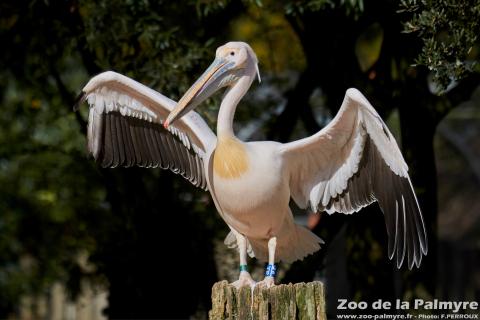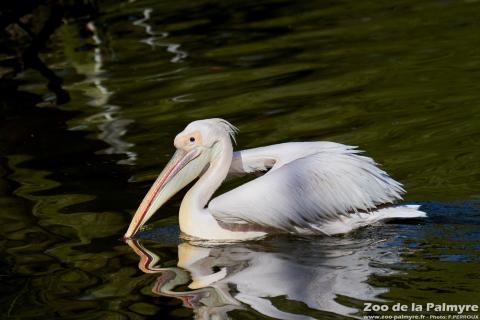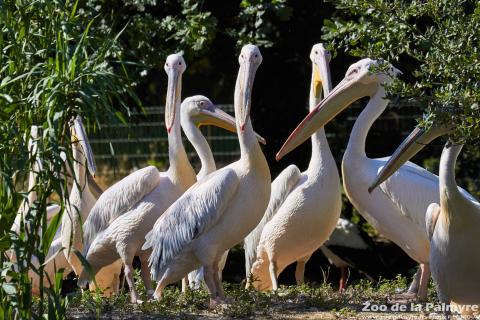Great White Pelican
Great White Pelican
Pelecanus onocrotalus

Great White Pelican
Great White Pelican
Pelecanus onocrotalus

-
Class
Aves -
Order
Pelecaniformes -
Familly
Pelecanidae
-
 2.2–3.5m
2.2–3.5m -
 ♂ 9–15kg, ♀ females 5–9kg
♂ 9–15kg, ♀ females 5–9kg -
 30 days
30 days -
 2
2 -
 30 years
30 years
-
Diet
piscivorous (carps, cichlids, occasional chicks) -
Habitat
coastal areas, lakes, deltas -
Range
sedentary populations in Africa; migratory populations in eastern Europe, central Asia and northern India -
Population in the wild
Inconnu -
IUCN REDLIST status


Pelicans are among the largest birds that can fly, and they are also excellent gliders. Their feet are webbed and they have a pouch of stretchy skin below their beaks in which they can store a large volume of fish or water.
They live in colonies and fish together: arranged in a semi-circle, they advance slowly over the surface of the water, driving fish towards the bank. They then only have to catch them in their large beaks, which they use like landing nets.
Although they have a very large geographical distribution, Pelicans are in decline in Europe, mainly because of the destruction of their habitat (draining of wetlands, increase in farming, industrialization) and pollution.





